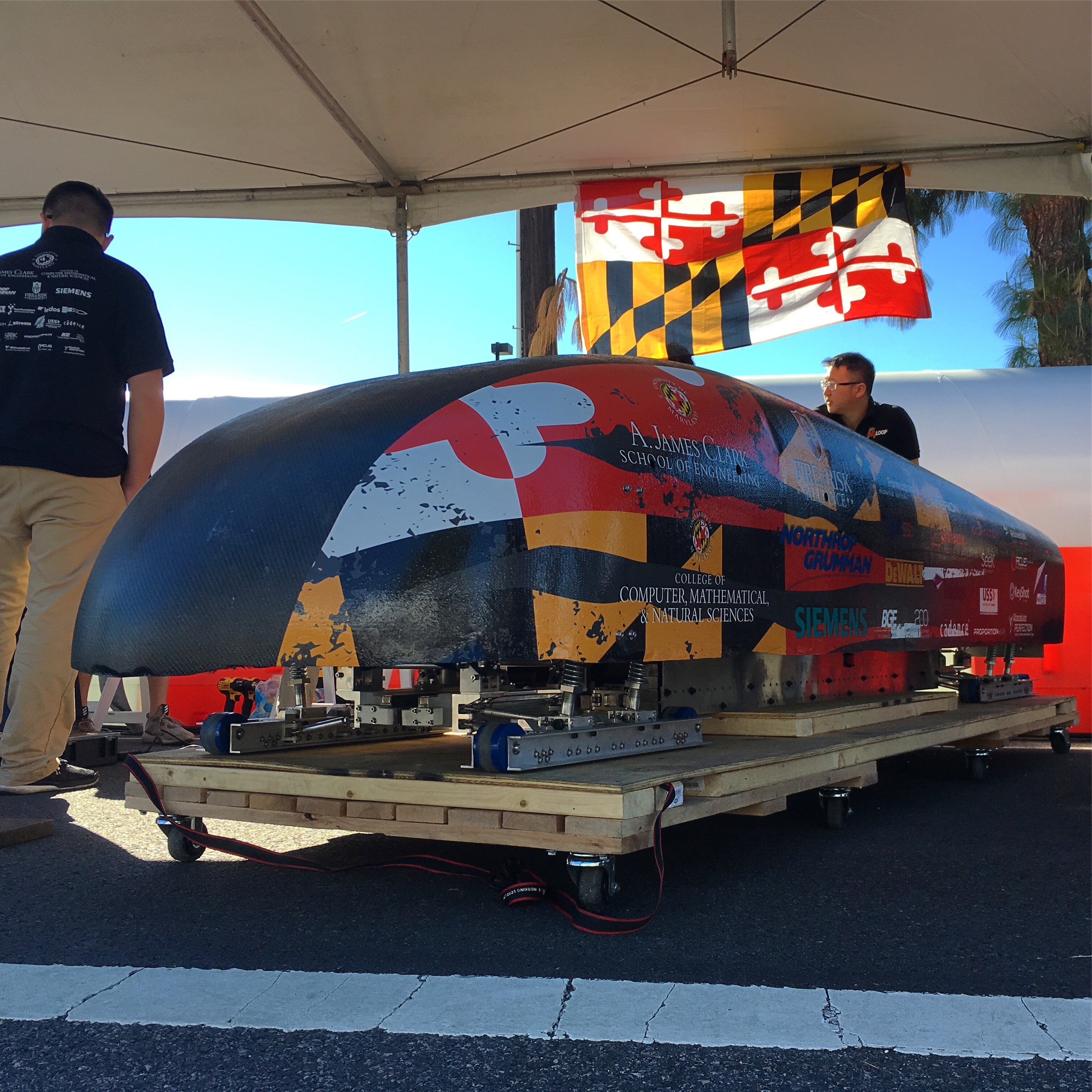In June 2015, University of Maryland senior Kyle Kaplan — a self-proclaimed Elon Musk fan — heard about the SpaceX CEO’s global hyperloop competition.
SpaceX, a corporation that manufactures and launches rockets and other space technology, had created the competition to accelerate development of a hyperloop prototype, according to the company. A hyperloop is a high-speed ground transportation system that would be run with the most powerful magnets commercially available.
Developing a prototype worthy of the competition started as a hobby, Kaplan said. But that hobby soon became a team, about 60 students strong, with over 10,000 hours of work.
“It started as us trying to figure out what we were doing,” said Kaplan, an aerospace engineering major and team leader of UMDLoop, this university’s competition team. “And it actually evolved into a real team that actually had the skill set to do it.”
[[Read more: UMD, Rutgers team advances in Hyperloop competition]]
Hyperloop pods, which would be the size of trains, would levitate through the use of magnets, reducing friction and allowing the pods to move much faster than traditional methods of travel. Pods could travel seven times faster than a train — fast enough to travel from Los Angeles to San Francisco in 30 minutes. In comparison, a car ride would typically take between six and seven hours.
The group built its first pod to be a third scale size of an actual pod, Kaplan said. The team’s pod is designed so it starts by moving on wheels, but as it picks up speed begins to levitate on magnetic currents that are generated in the track of the pod. Members work in two labs in the Physical Sciences Complex to design and construct the pod, and have also conducted simulations there.
UMDLoop brought its pod to SpaceX’s first competition weekend in California from Jan. 27 to Jan. 29, where 27 teams participated. The team — which went through an initial design weekend in January 2016 to make it to the first competition — placed first in the performance and operations category, and fifth overall. SpaceX determined the winners based on design, safety, structural and functional tests the corporation ran on all of the teams’ models.
The “ultimate” goal is to “accelerate this idea of this form of transportation,” Kaplan said.
Three teams, who came from Massachusetts Institute of Technology, Delft University of Technology in the Netherlands and Technical University of Munich, Germany, were able to run their pod designs on SpaceX’s one-mile vacuum-sealed test track. The UMDLoop team and teams from Virginia Tech and the University of Washington qualified to test their pods on the track, but the competition ran out of time, said Neel Patel, the team’s project manager.
Members did, however, get to test the pod for the first time in an alternate open-air track at the competition. The pod worked, Kaplan and Patel said.
UMDLoop is now continuing to the second competition weekend in Hawthorne, California, which will be more focused on the maximum speed pods can go. It is open to any student team that wants to enter. Teams that took part in the first competition weekend have to make significant changes to the design of their first pods or build a new design for the second competition in order to enter.
In preparation, UMDLoop is building a new pod that will retain certain parts from the old pod. Many design elements will also be reused, such as the general frame of the structure, as well as the levitation and magnetic control concepts.
“We’re designing something that is based on the original pod but a new and improved version, the idea being that we want to go faster,” Kaplan said. “We want to build something that is undeniably the best pod there.”
Kaplan and Patel, a senior aerospace engineering major, helped form the team on June 20, 2015 after a friend told Kaplan about the competition. Since the group’s inception, members of the team have individually put in up to 40 hours a week into the project on top of full course loads, Kaplan said.
The team has “probably put in over 10,000 hours of work” since the project started, said Noah Ryder, chief faculty adviser for the team and a fire prevention engineering lecturer.
The team is mainly student driven, although the group does get advice from faculty members. It has partnerships with the engineering school, computer, mathematical and natural sciences college and the Office of the Provost in addition to private sponsors such as Northrop Grumman and Siemens, which have provided supplies and materials to help build their model.
UMDLoop is not just restricted to STEM majors, Patel said. The team is also looking for graphic designers and students with experience in public relations. They recruit students in the fall and take on anyone who is interested and who can dedicate their time to the project, Patel said.
“It’s been pretty remarkable; the entire team is composed of undergrads,” Ryder said. “It’s pretty impressive compared to other teams.”



